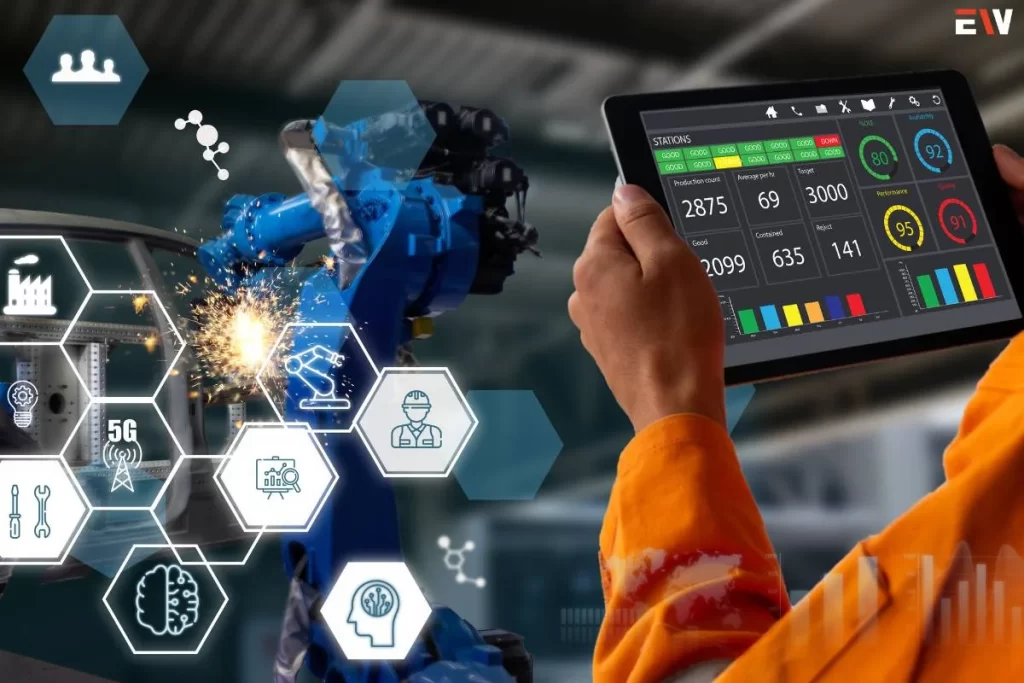
The digital twin technology has emerged as a revolutionary force in the dynamic world of modern business, altering the ways in which firms enhance their operations. Knowing how to use and take advantage of digital twin technology may be significant for companies looking to maintain efficiency and competitiveness. This blog delves into the benefits, uses, and future possibilities of digital twin technology as it relates to optimizing operations in businesses.
What is Digital Twin Technology?
Making a virtual replica of a real system or thing is known as “digital twin” technology. The performance, circumstances, and behaviour of this digital model are identical to those of its physical counterpart. The idea provides an in-depth comprehension of a tangible object or system by combining data from sensors, simulations, and real-time analytics. Businesses may monitor, assess, and enhance their operations more effectively and intelligently by utilizing these digital replicas.
Benefits of Digital Twin Technology
1. Enhanced Operational Efficiency
Businesses may monitor and manage their operations more effectively with the help of digital twins. Organizations can detect delays and inefficiencies prior to their impact on real operations by modelling real-world processes and systems. This proactive strategy improves overall productivity by streamlining procedures and minimizing downtime.


2. Improved Decision-Making
Businesses may get real-time data and sophisticated analytics with the help of digital twins. Having this knowledge is essential for making wise selections. Through an investigation of digital replicas’ performance and behaviour, entities may experiment with different approaches and tactics without compromising real assets. Better company results from strategic planning and decision-making that is enhanced by the capacity to simulate and assess various scenarios.
3. Predictive Maintenance
Predictive maintenance is one of the biggest benefits of digital twin technology. Businesses may anticipate possible malfunctions and take action before problems become worsened by regularly monitoring the digital twin of their machinery or equipment. Using this method will significantly cut down on unscheduled delays, lower maintenance costs, and increase asset longevity.


4. Enhanced Product Development
Digital twins serve as essential for streamlining the creation of new products. Businesses may test and develop designs before building real prototypes by creating virtual model of their products. Development expenditures and time to market have been reduced by the quick testing and optimization made possible by this continuous approach.
5. Better Customer Experience
In addition to improving customer experience, digital twin technology makes it possible for businesses to customize their offerings to meet the individual requirements of each customer. Through the analysis of customer interactions and feedback, these businesses have the ability to build digital twins of their customers’ profiles and preferences. This personalized approach promotes the delivery of targeted solutions, boosts the satisfaction of the customers, and promotes loyalty.

Applications of Digital Twin Technology

1. Manufacturing
Digital twins have been used in manufacturing to manage supply chains, track equipment’s physical well-being, and improve the manufacturing process. Manufacturers have the ability to identify inefficiencies, evaluate many different scenarios, and apply changes by generating virtual models of manufacturing processes. Higher quality of products, lower prices, and more effectiveness in operation are the effects of this strategy.
2. Healthcare
Digital twins have the potential to completely transform the field of medicine. Doctors may predict the results, assess and simulate different treatment alternatives, and customize care treatments by creating virtual models of their patients. Furthermore, digital twins of medical equipment and gadgets help in predictive maintenance, guaranteeing peak performance and lowering the likelihood of malfunctions.
3. Smart Cities
Digital twins play an important part in the development and operation of smart cities. By building digital replicas of the city’s infrastructure, planners and administrators can keep an eye on and control energy use, traffic, and public services. This type of technology allows for more efficient use of resources, more effective urban planning, and higher standards of living for the citizens.
4. Energy Sector
Digital twins have been employed in the energy sector to maximize the efficiency of distribution networks, sources of sustainable energy, and power plants. Through the monitoring and simulation of energy systems, companies might improve their efficiency, minimize interruptions, and optimize resource management. Additionally, this technology helps with predictive maintenance, which guarantees the reliability and dependability of the energy infrastructure.
Future Potential of Digital Twin Technology
The numerous possible applications and benefits associated with digital twin technology are expected to increase as it advances further. The capabilities of digital twins will be further enhanced by the combination of machine learning, artificial intelligence (AI), and the Internet of Things (IoT). Real-time decision-making, predictive analytics and even more specific simulations will all be made possible by these developments.
Furthermore, when digital twins are used far more frequently in many different kinds of industries, innovation will continue to develop and new possibilities will open up. Companies that adopt this technology at the beginning will have a competitive advantage because of increased productivity, lower expenses, and enhanced interactions with consumers.
Conclusion
The technology of digital twins is transforming the manner in which organizations optimize the way they operate, providing a range of benefits ranging from increased operational efficiency to better decision-making and predictive maintenance. Organizations may monitor, evaluate, optimize and improve the way they operate in previously imagined ways by building virtual representations of actual assets and systems. As technological developments advance, the role of digital twins in enhancing corporate processes will become increasingly important, leading to innovation and defining the foreseeable future of businesses throughout the whole world. Utilizing digital twin technologies now can lead to a more efficient, flexible, and competitive firm in the decades to come.

